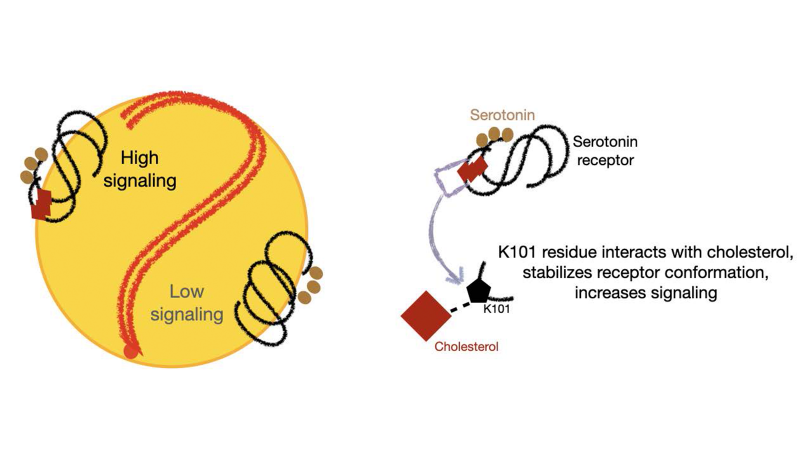
Receptors are the reason you perceive pain and pleasure, sight and sounds, touch and temperature. If you have ever accidently consumed a hot chilli, you would be familiar with the painful burning sensation that follows. This feeling is a result of a compound in chilli - capsaicin, binding to receptors in nerve cells and eliciting a burning sensation. These ‘hot receptors’ were acknowledged by this year’s Nobel Prize in Medicine.
Present on the membrane of cells, receptors are specialized proteins that sense the environment outside cells and elicit an appropriate response inside. Receptors are sometimes named after the molecules they sense, for example, capsaicin receptors sense capsaicin, insulin receptors sense insulin and so on.
Serotonin receptors present in the neurons of the brain sense the neurotransmitter serotonin and activate signalling within cells that eventually lead to distinct emotional states. These receptors have been the focus of research on depression for decades but the lack of a proper understanding of their function has hindered the development of a robust treatment.
Serotonin receptors belong to the GPCR (G protein-coupled receptors) family of receptors which share a common protein structure spanning the cell membrane. Prior studies have shown that the environmental sensing function of GPCRs’ depends on molecules in the cell membrane that either directly or indirectly interact with these receptors and alter their function. For example, low cholesterol levels in the cell membrane impede the serotonin sensing capacity of Serotonin receptors.
How do the serotonin receptors sense cholesterol?
In a recent study, researchers from Amitabha Chattopadhyay’s lab at the Centre for Cellular and Molecular Biology delved deeper into this question. Using a combination of experiments and simulations, they identified that Lysine (K101) in the CRAC I region of the Serotonin receptor binds to cholesterol in the cell membrane and stabilizes its interaction with the receptor.
When asked about the implications of this work, Dr Chattopadhyay says “There is a growing concern in the medical community that the chronic use of cholesterol-lowering drugs (such as statins) causes depression and anxiety. This work will help in developing better drugs that keep in mind not just the receptor as the drug target, but also the lipid environment in which the target GPCR is present.”
Serotonin receptors comprise many cholesterol recognition regions or motifs, which are necessary for sensing cholesterol. One of these motifs is CRAC (cholesterol recognition/interaction amino acid consensus), which is further subdivided into three sub motifs – CRAC I, II and III. The aromatic amino acids in CRAC are suggested to interact with the D ring of cholesterol and the positively charged amino acids with the hydroxyl group.
Which of these amino acids in CRAC sense cholesterol?
To answer this question, the researchers first mutated key aromatic and positively charged residues in CRAC - one lysine and one tyrosine residue in CRAC motif I, one arginine and one tyrosine residue in CRAC motif II. They did not mutate any residue in CRAC motif III as this motif has an additional role in receptor activity and mutating it would have confounding effects.
Next, they measured the effect of these mutations on the cholesterol sensing ability of the Serotonin 1A receptor. Low cholesterol levels in the membrane impede the serotonin sensing activity of the receptor. If a particular mutation results in the same receptor activity irrespective of cholesterol levels, then the amino acid mutated is important for cholesterol sensing. This was true for only one of the mutations – Lysine in the CRAC motif I (K101).
While the experimental analyses nailed the identity of the amino acid that interacts with cholesterol, a key question remained - How does K101 sense cholesterol? To answer this, the team turned to molecular dynamics simulations which enables identifying how different biomolecules interact with each other in the three-dimensional space. The results showed that K101 establishes polar contacts with cholesterol and stabilizes its interaction with the extra-cellular loop 1(ECL1) of the serotonin receptor. Varying cholesterol levels change receptor stability and consequently receptor activity.
So, what next? As stated earlier, CRAC is just one of the cholesterol sensing motifs in the GPCR receptors. The molecular identity of other potential cholesterol binding sites, whether they interact with K101 on the CRAC motif 1 and influence serotonin signalling remain open for future investigations.
This article has been run past the researchers, whose work is covered, to ensure accuracy.






